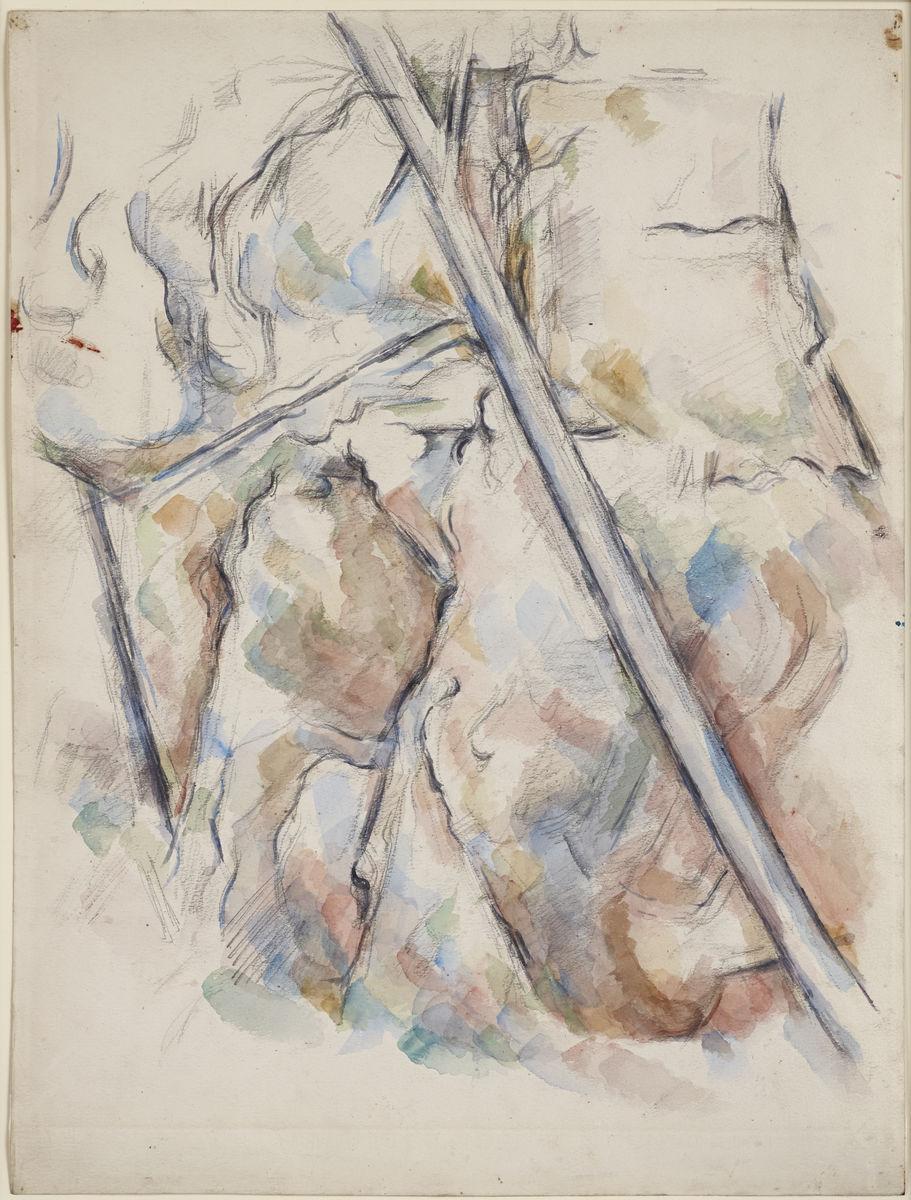Cézanne is widely acknowledged to have transformed landscape painting, most radically in his late watercolors. These works do not so much attempt to depict the actual appearance of a scene as to translate it into self-sufficient sequences of patches and lines of a restricted range of vivid colors. This installation juxtaposes Cézanne’s work with landscapes drawn, printed or painted by earlier artists. The resulting dialogue between images both reveals the extent to which Cézanne employed standard types of landscape depictions – close-up views, woodland panoramas, rocky landscapes, wide vistas, landscapes with buildings – but also suggests how Cézanne goes further, explicitly acknowledging that what is real in art is different and independent from what is experienced in nature. It is not, therefore, an exhibition about causalities, but rather a profound way of illuminating the path of Cézanne’s investigation.
“The vision of these path-breaking European and American artists of the modern era richly reward our close consideration a century later,” said James Steward, Nancy A. Nasher–David J. Haemisegger, Class of 1976, Director. “We are delighted to partner with the Phillips Collection in exploring both the formal vocabularies of art and the ways in which it responded to broad cultural and political shifts through new visual and formal means.”
The Artist Sees Differently: Modern Still Lifes from The Phillips Collection has been organized by The Phillips Collection, Washington, D.C., in collaboration with the Princeton University Art Museum. This exhibition at Princeton has been made possible with generous support from the Kathleen C. Sherrerd Program Fund for American Art; the Frances E. and Elias Wolf, Class of 1920, Fund; Susan and John Diekman, Class of 1965; and William S. Fisher, Class of 1979, and Sakurako Fisher through the Sakana Foundation. Additional support has been provided by the Allen R. Adler, Class of 1967, Exhibitions Fund; Betty Wold Johnson, through the Robert Wood Johnson III Fund of the Princeton Area Community Foundation; the New Jersey State Council on the Arts, a partner agency of the National Endowment for the Arts; Barbara and Gerald Essig; the Rita Allen Foundation; and the Partners of the Princeton University Art Museum.
Landscapes Behind Cézanne has been made possible by the Allen R. Adler, Class of 1967, Curatorial Leadership Fund.
About the Princeton University Art Museum
With a collecting history that extends back to 1755, the Princeton University Art Museum is one of the leading university art museums in the country, with collections that have grown to include over 100,000 works of art ranging from ancient to contemporary art and spanning the globe.
Committed to advancing Princeton’s teaching and research missions, the Art Museum also serves as a gateway to the University for visitors from around the world. Intimate in scale yet expansive in scope, the Museum offers a respite from the rush of daily life, a revitalizing experience of extraordinary works of art and an opportunity to delve deeply into the study of art and culture.
The Princeton University Art Museum is located at the heart of the Princeton campus, a short walk from the shops and restaurants of Nassau Street. Admission is free. Museum hours are Tuesday, Wednesday, Friday and Saturday 10 a.m. to 5 p.m.; Thursday 10 a.m. to 9 p.m.; and Sunday 12 p.m. to 5 p.m. The Museum is closed Mondays and major holidays.
























![DEl Kathryn Barton [Australian b. 1972] the more than human love , 2025 Acrylic on French linen 78 3/4 x 137 3/4 inches 200 x 350 cm Framed dimensions: 79 7/8 x 139 inches 203 x 353 cm](/sites/default/files/styles/image_5_column/public/ab15211bartonthe-more-human-lovelg.jpg?itok=wW_Qrve3)



